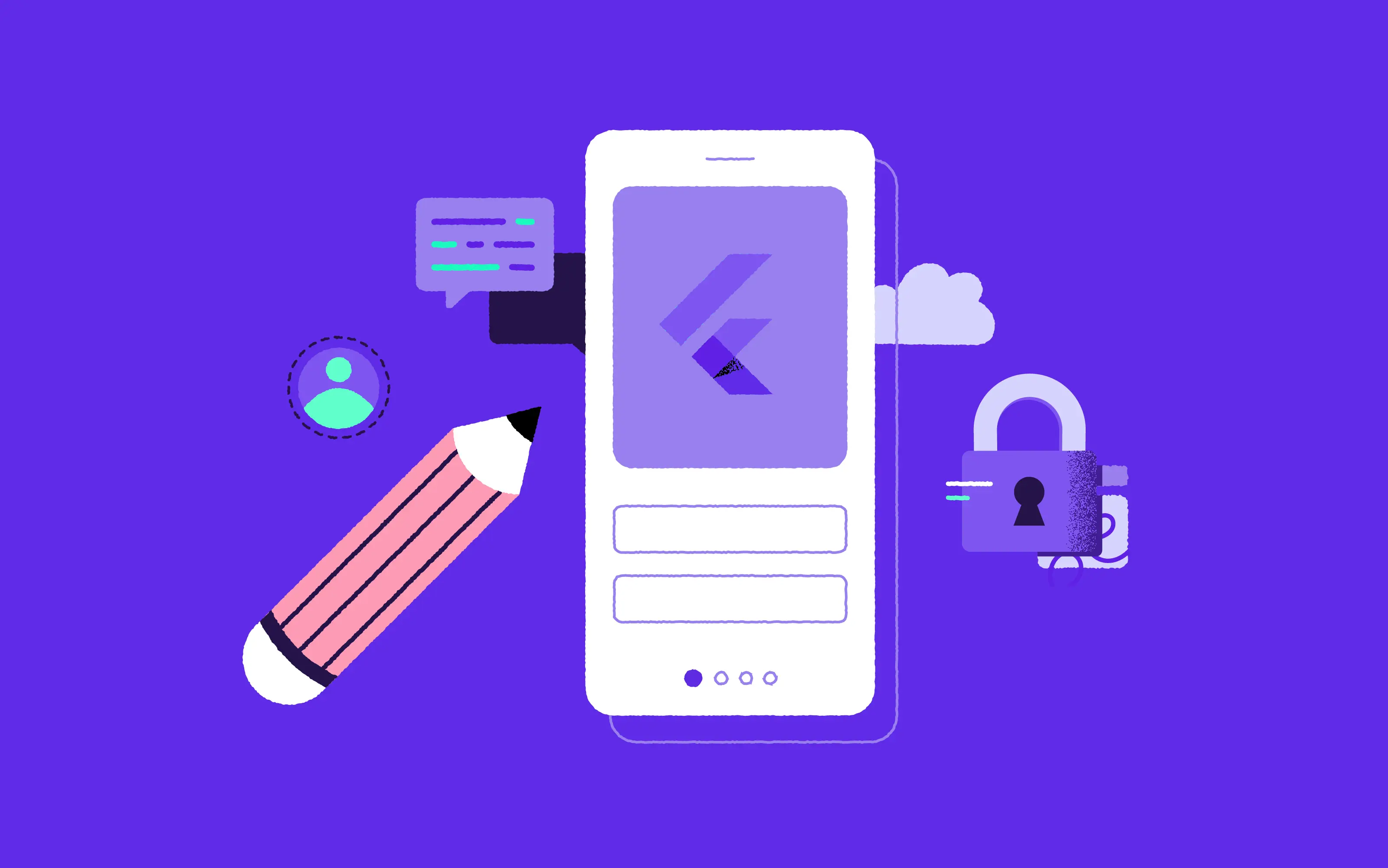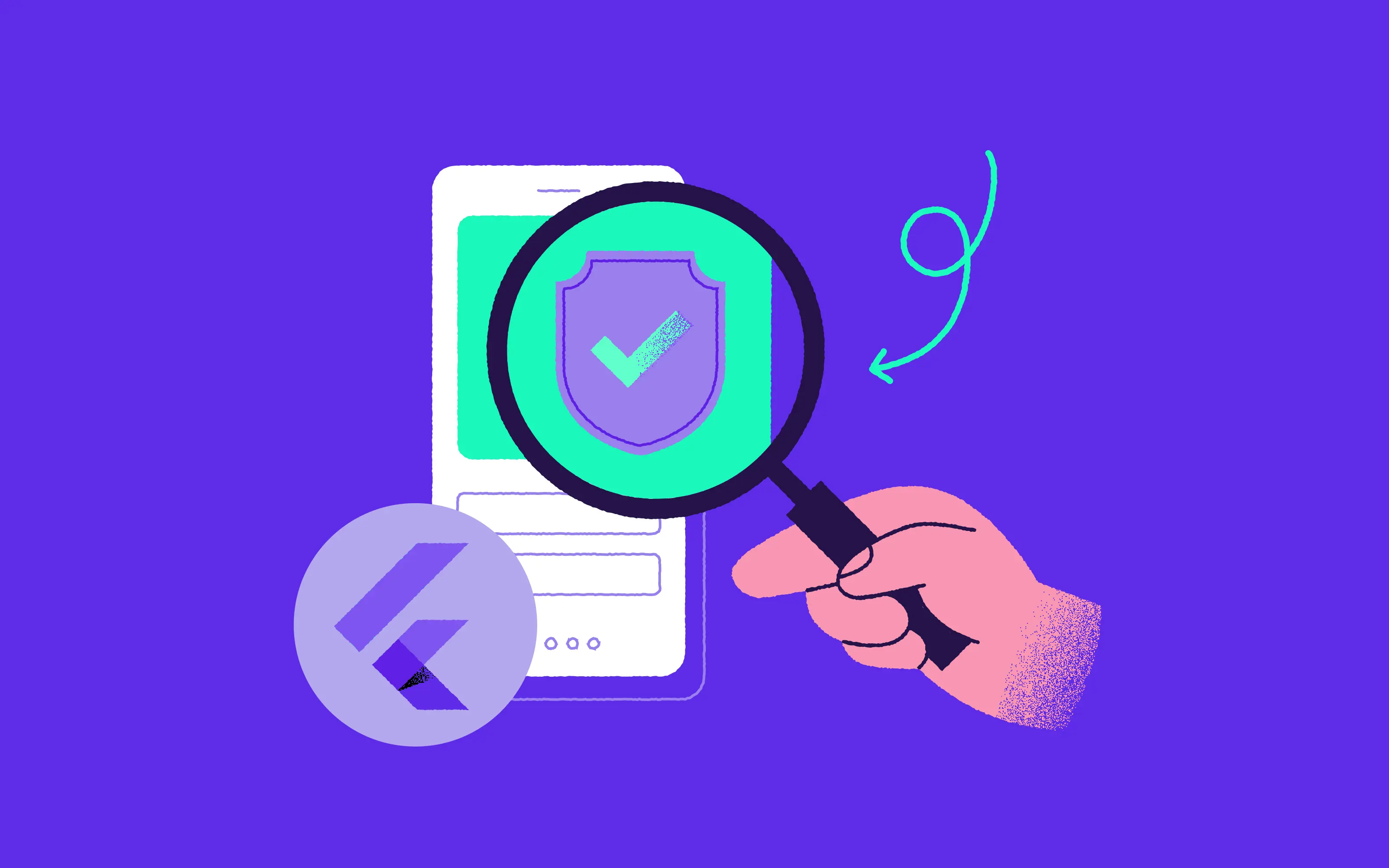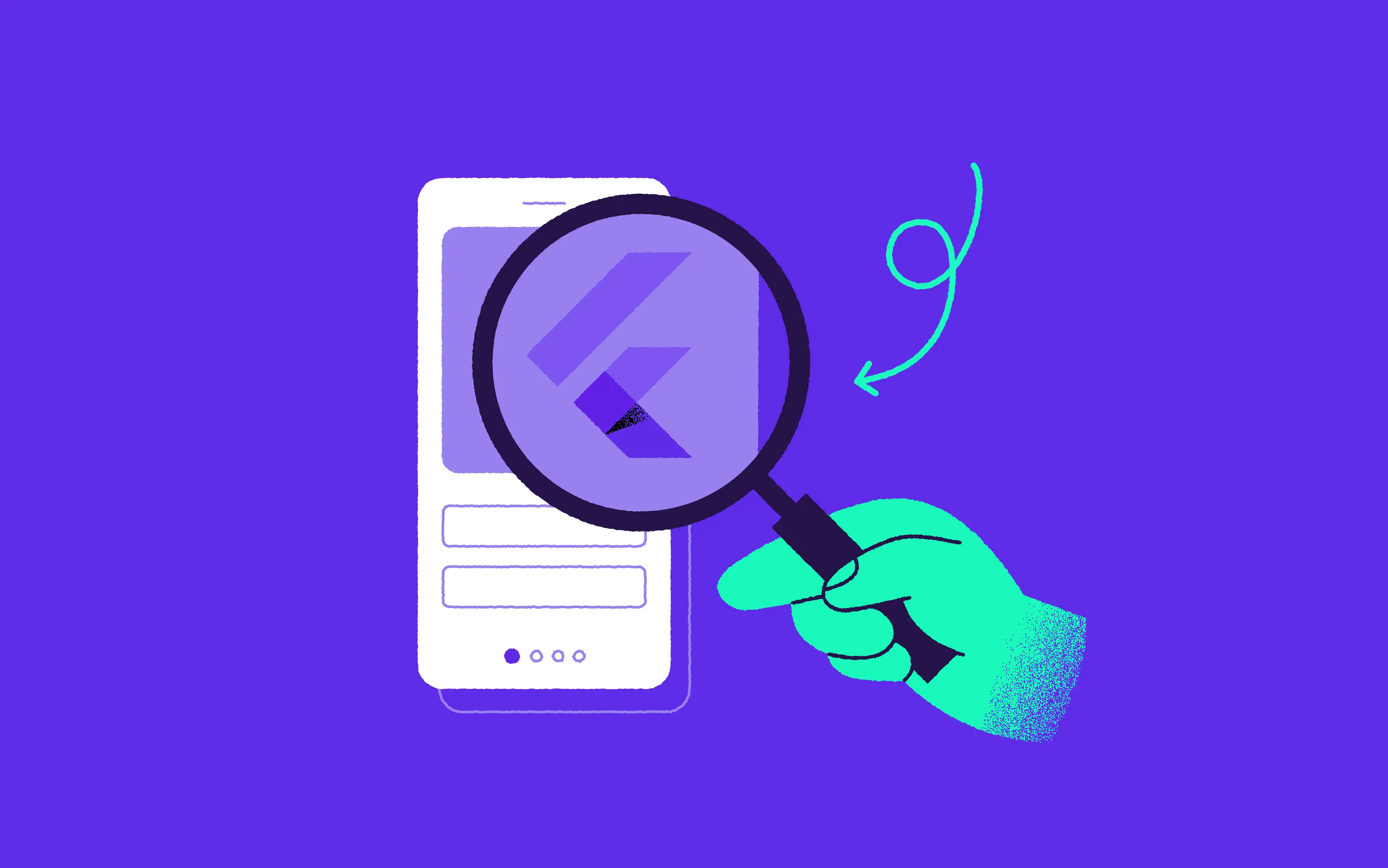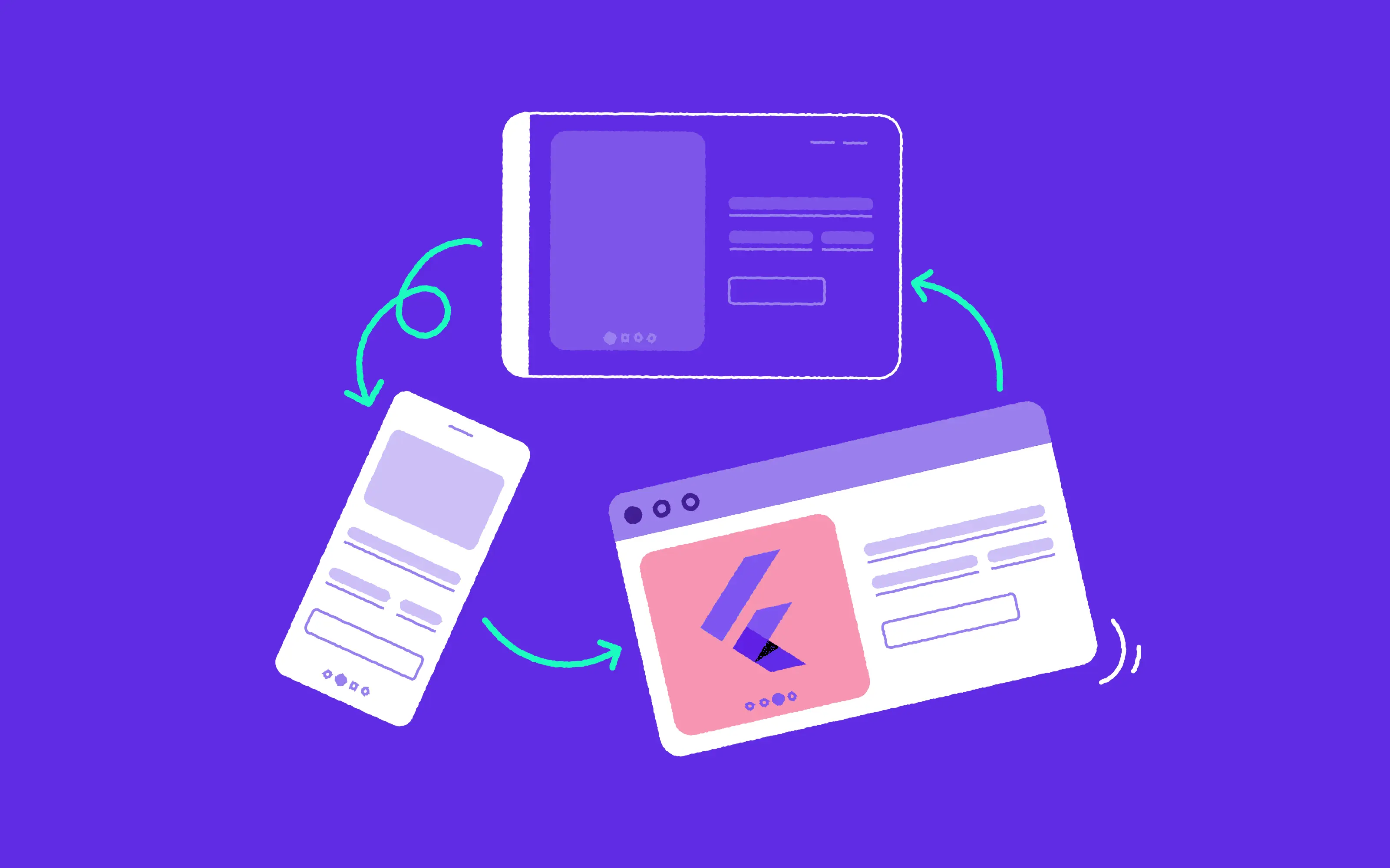
It’s not all black and white but enterprise-grade companies usually have different needs than startups when it comes to mobile development. While startups would typically go for simpler builds and unique user experiences, enterprise app development often requires robust solutions that enable solid back-end integration and support for numerous users and large data. Is Flutter a good choice for them?
What do enterprises need from app development?
Not only enterprise-grade companies look for enterprise-grade applications. Still, they tend to have more resources and slightly more time available for mobile development, as well as more complex requirements. Enterprises don’t aim for groundbreaking solutions. They need to tend to large user bases and connect all the functionalities in their offer on a large scale. That is their main focus. Plus the handling and analyzing of loads of data. This requires enterprise app development to meet a number of must-gos.
Security
Enterprises need mobile applications that are secure and reliable. This includes secure authentication, data encryption, and secure communication protocols.
Flutter uses solutions provided by OS creators to protect applications from malicious code and malicious users. The framework provides secure APIs and data security features such as secure storage and encryption to help protect user data.
Scalability
They need solutions that can adapt no matter the size of their organization, or growing back-end, and can handle large volumes of data.
Flutter’s effective architecture makes adding new app features easy - and makes them work more efficiently.
Cross-Platform Development
They need solutions that work on multiple operating systems and devices.
Enterprise app development with Flutter allows companies to create applications that can be used on mobile (Android, iOS), desktop (Windows, macOS, Linux) and Web, rather than just one. This helps to ensure a consistent user experience across platforms and increases the potential audience for the application.
Good UX design
They need apps that are easy to use and intuitive.
Flutter allows enhanced UX app development. It provides a wide range of widgets, tools, and APIs to create apps with superb UI. The Flutter UI framework is designed to create fast and responsive apps that can be customized according to the user’s needs.
Integration
They need mobile applications that can be integrated with existing systems and processes.
Flutter allows enterprises to easily integrate apps with a variety of back-end systems and services, including cloud-based databases, authentication systems, and REST APIs. Additionally, Flutter provides a wealth of third-party packages available to help with back-end integration.
Analytics
They need mobile applications that can capture and analyze user data so they can make informed decisions.
Flutter offers a wide range of analytics and reporting tools that can help developers gain insights into user behavior and preferences. These insights can be used to optimize UX and improve the overall performance of the app.
Data Management
They need mobile applications that can manage and store large amounts of data efficiently.
Flutter apps help reduce memory usage and improve performance, offloading heavy tasks to backend servers and leveraging caching techniques to reduce the amount of data that needs to be sent between servers and the app, utilizing cloud computing services to scale up quickly to meet demand, and more.
Maintenance
They need mobile applications that are easy to maintain and update.
Flutter apps are relatively easy to maintain, as they use the same codebase for both iOS and Android. This eliminates the need to maintain separate codebases. Additionally, Flutter apps are built using the Dart language, which is easy to read and understand.

Why should enterprise-grade companies choose Flutter?
In a nutshell, it’s because all of the above can be obtained with Flutter.
If you are new to Google’s development framework, start with reading our article on Flutter app development. It goes without saying that it can bring a full-house enterprise app development to your company, based on the experience gained from 40 thousand applications already shipped with Flutter, among them apps by Toyota, Philips, Groupon, Amazon, BMW, or Credit-Agricole.
Enterprise-grade companies can use it as a powerful and efficient mobile development framework that streamlines the development process, allowing to quickly launch mobile applications across Android, iOS, or web.
This is what Nicolai Krämer, Vice President Offboard Platform at BMW Group, said about the automotive giant’s Flutter development process:
"The new app platform is built on three pillars: user friendliness, safety and reliability. It provides a consistently designed set of functions spanning all brands based on feedback and our customers’ usage behavior."
I believe it’s highly advisable that your enterprise app be taken over by this framework too. Flutter offers a variety of features that are beneficial for enterprise-grade companies - a rich set of tools, widgets, and libraries that enable developers to quickly create and deploy applications.
Google’s solution is highly scalable and it offers a wide range of customization options, making it a good choice for companies that need to develop and deploy robust enterprise applications.
Flutter’s characteristics enterprises will love
So if you’re looking to optimize costs or seamlessly connect your growing offer in one app, rapid development by the means of Flutter will definitely do the trick. But there are many other characteristics of Flutter that the developers and finance specialists (and then also users) at your enterprise will love.
Hot Reload feature
It allows developers to make changes to the code of their app and see the changes applied immediately, without needing to restart the app. It greatly improves development especially when the app includes many co-dependent functionalities.
See it in action below.

Single code source
It's the ability to write code once and have it run on both iOS and Android devices, as well as web apps. This is made possible by Flutter’s Dart programming language, which allows developers to write code that can be compiled and run on numerous platforms. This reduces development costs and time, making it a great choice for enterprise-grade companies.
Open Source
Flutter is an open source platform, meaning that it can be used without any additional licensing costs. This makes it more cost-effective for companies to use and also ensures that the code is not locked down to a single platform. Thanks to this, developers can easily track changes, which can’t be said about the iOS’s SDK.
UI/UX Design
Flutter allows developers to create high-quality user interfaces and experiences. This makes it easier for companies to create applications that are attractive and engaging to their users, but also intuitive.
Flexibility
Flutter is highly customizable, allowing developers to tailor their applications to their needs and specifications. This makes it easier for companies to build and maintain applications that meet their changing business requirements.
Flutter vs ReactNative - what is the difference?
You may find yourself living with too much stack. And you may ask yourself - am I right, or am I wrong? Well, here we present some pros and cons of Flutter vs ReactNative - one of Flutter’s biggest competitors.
Programming Language
React Native uses JavaScript as its primary language, while Flutter is based on the Dart programming language. The former has slowly become a thing of the past, while the latter has a bright future ahead, as Flutter is the-first choice framework in the upcoming Fuchsia OS developed by Google.
User Interface
React Native uses native components for building user interfaces, while Flutter runs drawing components itself and provides widgets created by Flutter’s team which imitate those of Apple HIG, Material Design and more. For the latter it means that it's easier to build apps for different devices that look exactly the same (and at the same time).
Performance
React Native may show slightly lower performance, as it has to communicate with the system UI, but the problem is now being addressed. Flutter apps, on the other hand, render components themselves, so it’s easy to achieve a stable 60/120 frames per second.
Development Time
React Native relies on third-party libraries and frameworks. Flutter has its own widget library, which can be used to quickly develop an app. The difference may or may not play a role depending on other factors.
Community Support
React Native has a larger community of developers, while Flutter is still relatively new, yet the latter is leading Github in terms of received stars.
Conclusion
There are many benefits to using Flutter for enterprise applications development. It’s cross-platform operability, less time and cost of development, and ease of use, among other things. At 10Clouds, our flagship Flutter project is probably Crescent - an investing application dedicated to generation Z. Read the Crescent case study to see what challenges we helped tackle.
And as an enterprise company you are looking for a developer that will help create a wonderfully designed app that would answer all the needs we listed in this article, just let us know. We can help Flutter steal your big business’s heart.



